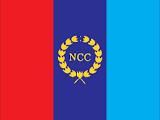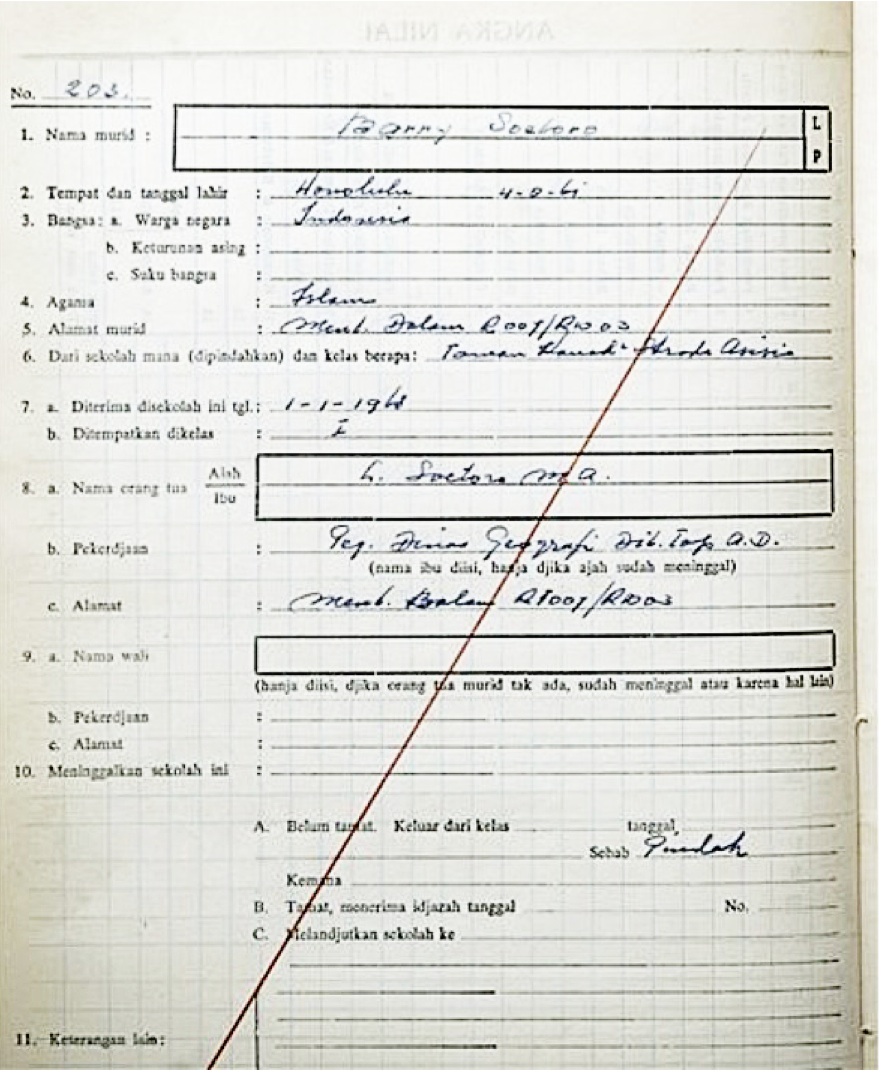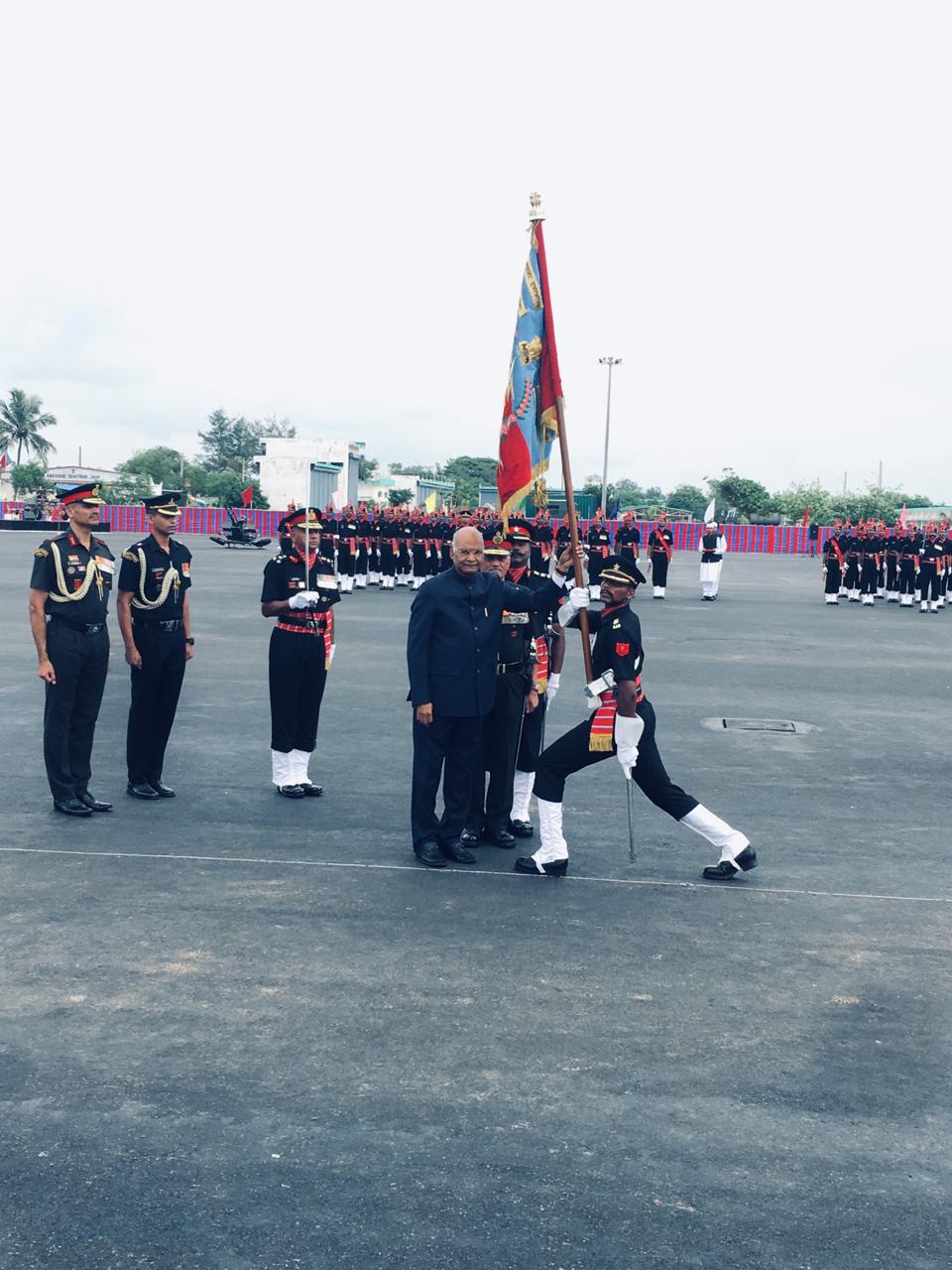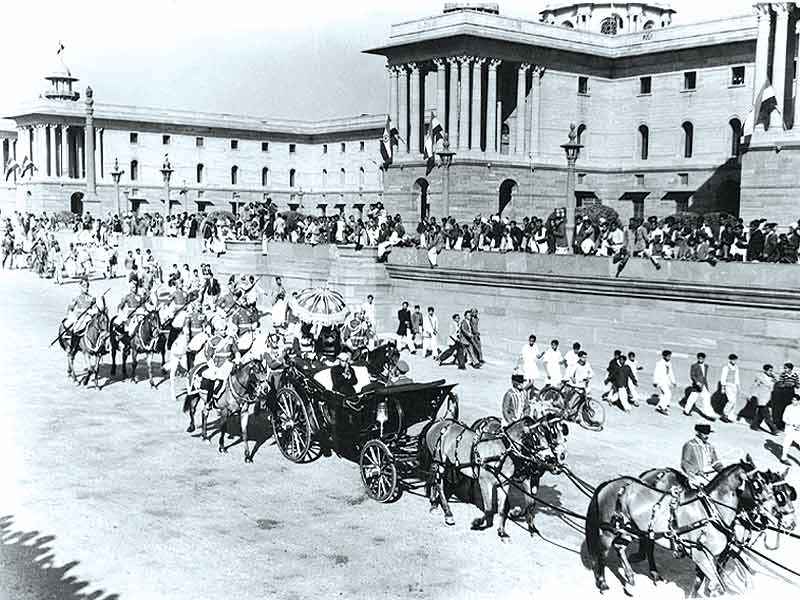|
Divya Ajith Kumar
Captain Divya Ajith Kumar is an Army Air Defense (AAD) officer in the Indian Army. She graduated from the Officers Training Academy, Chennai. Kumar is the first woman to be conferred by the Army with the Sword of Honour, a prize given to the best cadet. She led an all-woman contingent of 154 female officers and cadets during the Republic Day Parade in 2015. Early life and education Divya Ajith Kumar was born in Chennai to a Tamil family. She is a first-generation soldier. She attended Good Shepherd Matriculation Higher Secondary School, and Stella Maris College, Chennai, where she completed her B.Com. (Hons). She joined the National Cadet Corps (NCC) and participated in the NCC women contingent in Rajpath. Kumar later joined, and graduated from the Officers Training Academy (OTA). Kumar was awarded the Sword of Honour prize, given to the best cadet. She was the first woman to be awarded the prize. Military career Kumar was commissioned into Corps of Army Air Defence in ... [...More Info...] [...Related Items...] OR: [Wikipedia] [Google] [Baidu] |
Chennai
Chennai (, ), formerly known as Madras ( the official name until 1996), is the capital city of Tamil Nadu, the southernmost Indian state. The largest city of the state in area and population, Chennai is located on the Coromandel Coast of the Bay of Bengal. According to the 2011 Indian census, Chennai is the sixth-most populous city in the country and forms the fourth-most populous urban agglomeration. The Greater Chennai Corporation is the civic body responsible for the city; it is the oldest city corporation of India, established in 1688—the second oldest in the world after London. The city of Chennai is coterminous with Chennai district, which together with the adjoining suburbs constitutes the Chennai Metropolitan Area, the 36th-largest urban area in the world by population and one of the largest metropolitan economies of India. The traditional and de facto gateway of South India, Chennai is among the most-visited Indian cities by foreign tourists. It was ranked the ... [...More Info...] [...Related Items...] OR: [Wikipedia] [Google] [Baidu] |
National Cadet Corps (India)
The National Cadet Corps (NCC) is the youth wing of the Indian Armed Forces with its headquarters in New Delhi, India. It is open to school and college students on voluntary basis as a Tri-Services Organisation, comprising the Army, the Navy and the Air Force, engaged in developing the youth of the country into disciplined and patriotic citizens. The soldier youth foundation in India is a voluntary organization which recruits cadets from high schools, higher secondary, colleges and universities all over India. The cadets are given basic military training in small arms and drill. The officers and cadets have no liability for active military service once they complete their course. The emblem of the NCC consists of 3 colours; red, dark blue and light blue. These colours represent the Indian Army, Indian Navy and Indian Air Force respectively. The 17 lotuses indicate the 17 directories of India. History The NCC in India was formed in 1948. It can be traced back to the ‘Unive ... [...More Info...] [...Related Items...] OR: [Wikipedia] [Google] [Baidu] |
Living People
Related categories * :Year of birth missing (living people) / :Year of birth unknown * :Date of birth missing (living people) / :Date of birth unknown * :Place of birth missing (living people) / :Place of birth unknown * :Year of death missing / :Year of death unknown * :Date of death missing / :Date of death unknown * :Place of death missing / :Place of death unknown * :Missing middle or first names See also * :Dead people * :Template:L, which generates this category or death years, and birth year and sort keys. : {{DEFAULTSORT:Living people 21st-century people People by status ... [...More Info...] [...Related Items...] OR: [Wikipedia] [Google] [Baidu] |
Indian Army Officers
Indian or Indians may refer to: Peoples South Asia * Indian people, people of Indian nationality, or people who have an Indian ancestor ** Non-resident Indian, a citizen of India who has temporarily emigrated to another country * South Asian ethnic groups, referring to people of the Indian subcontinent, as well as the greater South Asia region prior to the 1947 partition of India * Anglo-Indians, people with mixed Indian and British ancestry, or people of British descent born or living in the Indian subcontinent * East Indians, a Christian community in India Europe * British Indians, British people of Indian origin The Americas * Indo-Canadians, Canadian people of Indian origin * Indian Americans, American people of Indian origin * Indigenous peoples of the Americas, the pre-Columbian inhabitants of the Americas and their descendants ** Plains Indians, the common name for the Native Americans who lived on the Great Plains of North America ** Native Americans in the Uni ... [...More Info...] [...Related Items...] OR: [Wikipedia] [Google] [Baidu] |
Barack Obama
Barack Hussein Obama II ( ; born August 4, 1961) is an American politician who served as the 44th president of the United States from 2009 to 2017. A member of the Democratic Party, Obama was the first African-American president of the United States. He previously served as a U.S. senator from Illinois from 2005 to 2008 and as an Illinois state senator from 1997 to 2004, and previously worked as a civil rights lawyer before entering politics. Obama was born in Honolulu, Hawaii. After graduating from Columbia University in 1983, he worked as a community organizer in Chicago. In 1988, he enrolled in Harvard Law School, where he was the first black president of the '' Harvard Law Review''. After graduating, he became a civil rights attorney and an academic, teaching constitutional law at the University of Chicago Law School from 1992 to 2004. Turning to elective politics, he represented the 13th district in the Illinois Senate from 1997 until 2004, when he ran for the U ... [...More Info...] [...Related Items...] OR: [Wikipedia] [Google] [Baidu] |
Republic Day (India)
Republic Day is a public holiday in India where the country marks and celebrates the date on which the Constitution of India came into effect on 26 January 1950. This replaced the Government of India Act 1935 as the governing document of India, thus turning the nation into a republic separate from British Raj. The constitution was adopted by the Indian Constituent Assembly on 26 November 1949 and came into effect on 26 January 1950. 26 January was chosen as the date for Republic Day as it was on that day in 1930 when the Declaration of Indian Independence was proclaimed by the Indian National Congress. History of Republic Day India achieved independence from the British Raj on 15 August 1947 following the Indian independence movement. The independence came through the Indian Independence Act 1947 (10 & 11 Geo 6 c 30), an Act of the Parliament of the United Kingdom that partitioned British India into the two new independent Dominions of the British Commonwealth (later Commonw ... [...More Info...] [...Related Items...] OR: [Wikipedia] [Google] [Baidu] |
Army Air Defence College
The Army Air Defence College, (abbreviated as AADC), is the training academy for the Corps of Army Air Defence (India), Army Air Defence Corps of Indian Army. The college is located in the Gopalpur Military Station in Gopalpur, Odisha, Gopalpur, Odisha. It spreads over an area of 2700 acres of land. The primary objective of the academy is to impart technical and operational knowledge to the personnel of Indian Army posted to the Corps of Army Air Defence (AAD) about the air defence systems and anti-aircraft warfare. Besides the army personnel, the academy also trains personnel from Indian Navy, navy, Indian Air Force, air force and officers from Foreign relations of India, friendly foreign nations. The history of the academy dates back to mid 1940s when anti-aircraft training battery was established by the British Raj, British in July 1940 at Karachi (now Pakistan) to train the troops deputed to the newly established air defence artillery. Post-independence Air Defence & Guided Mis ... [...More Info...] [...Related Items...] OR: [Wikipedia] [Google] [Baidu] |
Rajpath
Rajpath, officially named Kartavya Path, and formerly known as Kingsway, is a ceremonial boulevard in New Delhi, India, that runs from Rashtrapati Bhavan on Raisina Hill through Vijay Chowk and India Gate, National War Memorial to National Stadium, Delhi. The avenue is lined on both sides by huge lawns, canals and rows of trees. Considered to be one of the most important roads in India, it is where the annual Republic Day parade takes place on 26 January. Janpath (meaning "People's Way") crosses the road. Rajpath runs in east-west direction. Roads from Connaught Place, the financial centre of Delhi, run into Rajpath from north. After climbing Raisina Hill, Rajpath is flanked by the North and South Blocks of the Secretariat Building. Finally it ends at the gates of Rashtrapati Bhavan. At Vijay Chowk it crosses Sansad Marg, and the Parliament House of India can be seen to the right when coming from the India Gate. It is also used for the funeral processions of key poli ... [...More Info...] [...Related Items...] OR: [Wikipedia] [Google] [Baidu] |
Good Shepherd Matriculation Higher Secondary School (Marthandam)
In most contexts, the concept of good denotes the conduct that should be preferred when posed with a choice between possible actions. Good is generally considered to be the opposite of evil and is of interest in the study of ethics, morality, philosophy, and religion. The specific meaning and etymology of the term and its associated translations among ancient and contemporary languages show substantial variation in its inflection and meaning, depending on circumstances of place and history, or of philosophical or religious context. History of Western ideas Every language has a word expressing ''good'' in the sense of "having the right or desirable quality" ( ἀρετή) and ''bad'' in the sense "undesirable". A sense of moral judgment and a distinction "right and wrong, good and bad" are cultural universals. Plato and Aristotle Although the history of the origin of the use of the concept and meaning of "good" are diverse, the notable discussions of Plato and Aristotle on ... [...More Info...] [...Related Items...] OR: [Wikipedia] [Google] [Baidu] |
Corps Of Army Air Defence
The Corps of Army Air Defence (abbreviated as AAD), is an active corps of the Indian Army and a major combat support arm tasked with Anti-aircraft warfare, air defence of the country from foreign threats. The AAD is responsible for the protection of Indian air space from enemy aircraft and missiles, especially below 5,000 feet. The history of the AAD dates back to 1939 during the times of the British Raj in India. The corps actively took part in the Second World War fighting on behalf of the British Empire. Post independence, the corps has participated in all the wars involving India, starting from the 1947 Indo-Pakistani War to the 1999 Kargil conflict. The corps enjoyed autonomous status from 1994, after the bifurcation of the Corps of Air Defence Artillery from the Army's Regiment of Artillery (India), Regiment of Artillery. A separate training school, the Army Air Defence College (AADC), was established to train its personnel. History and origin Pre-independence Air d ... [...More Info...] [...Related Items...] OR: [Wikipedia] [Google] [Baidu] |
Tamils
The Tamil people, also known as Tamilar ( ta, தமிழர், Tamiḻar, translit-std=ISO, in the singular or ta, தமிழர்கள், Tamiḻarkaḷ, translit-std=ISO, label=none, in the plural), or simply Tamils (), are a Dravidian ethno-linguistic group who trace their ancestry mainly to India’s southern state of Tamil Nadu, union territory of Puducherry and to Sri Lanka. Tamils who speak the Tamil Language and are born in Tamil clans are considered Tamilians. Tamils constitute 5.9% of the population in India (concentrated mainly in Tamil Nadu and Puducherry), 15% in Sri Lanka (excluding Sri Lankan Moors), 7% in Malaysia, 6% in Mauritius, and 5% in Singapore. From the 4th century BCE, urbanisation and mercantile activity along the western and eastern coasts of what is today Kerala and Tamil Nadu led to the development of four large Tamil empires, the Cheras, Cholas, Pandyas, and Pallavas and a number of smaller states, all of whom were warring amongst ... [...More Info...] [...Related Items...] OR: [Wikipedia] [Google] [Baidu] |
Republic Day Parade
The Delhi Republic Day parade is the largest and most important of the parades marking the Republic Day celebrations in India. The parade takes place every year on 26 January at Rajpath, New Delhi. It is the main attraction of India's Republic Day celebrations, which last for three days. The first parade was held in 1950, and it has been held every year since. The cultural pageant is a symbol of a diverse but united India. The parade marches from the Rashtrapati Bhawan along the Rajpath, to India Gate and from there to Red Fort. It opens with the unfurling of the national flag by the President of India. This is followed by marching from several regiments of the Army, Navy, and Air Force, along with their bands. Tableaux from various states signifying their cultures are displayed. A beating retreat ceremony signifies the end of the parade. History The first Republic Day Parade was held on 26 January 1950, led by then Brigadier Moti Sagar of the Gorkha Regiment, during which ... [...More Info...] [...Related Items...] OR: [Wikipedia] [Google] [Baidu] |







